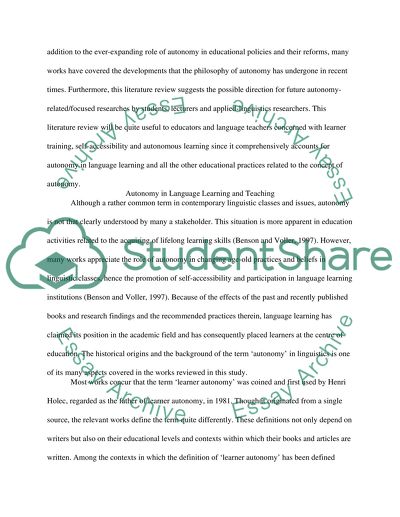Cite this document
(“Learner Autonomy in Language Learning and Teaching Literature review”, n.d.)
Retrieved from https://studentshare.org/english/1455183-learner-autonomy-in-language-learning-and-teaching
Retrieved from https://studentshare.org/english/1455183-learner-autonomy-in-language-learning-and-teaching
(Learner Autonomy in Language Learning and Teaching Literature Review)
https://studentshare.org/english/1455183-learner-autonomy-in-language-learning-and-teaching.
https://studentshare.org/english/1455183-learner-autonomy-in-language-learning-and-teaching.
“Learner Autonomy in Language Learning and Teaching Literature Review”, n.d. https://studentshare.org/english/1455183-learner-autonomy-in-language-learning-and-teaching.


